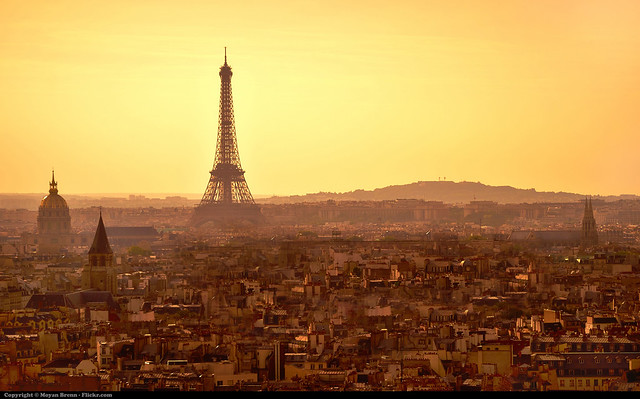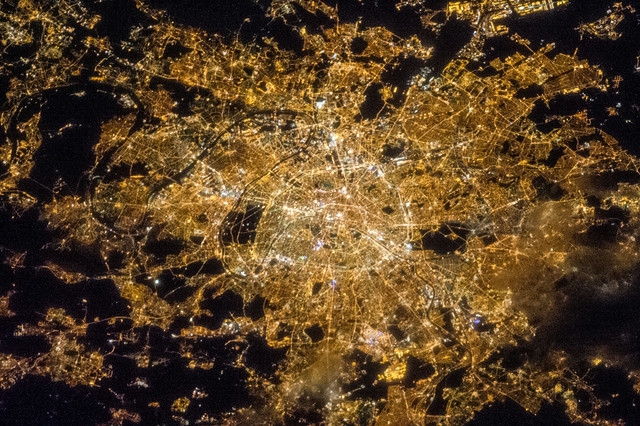食物產銷、都市交通,與「綠建築」有何連結呢?我們的城市消費了多數的食品,但卻不生產食物。而很多人在城市裡工作,卻不住在裡頭。

伴隨城市化而來的資源消耗課題如何解開。圖片來源:Moyan Brenn。CC BY 2.0
這個現象造成效能低落的問題,不只是在都市規劃的脈絡裡,也意味著能源使用的低效率。一般人有九成的時間,是待在建築物中──在住家、辦公室、商店、學校、餐廳、健身房之間移動。
大多數電網的營運是「垂直整合」的;發電、傳輸,然後分配到下游的使用者。因此,法國知名的綠色建築師 Pascal Rollet說,應該要讓「翻新電網」(grid modernization),讓終端的電力消費者得以更有效率地運用電力。
這是因為,不同功能的建築物擁有不同的用電模式,有各自不同的用電尖峰時段。如果能在各建築物彼此之間調用電力,會是很大的(提高能源效率的)機會。
補充說明一點,分散的人口造成了移動(交通)效率問題,小老百姓通常須要「長途跋涉」去工作,製造溫室氣體排放;這還不說被忽視的外部性,也就是進出城市枯燥乏味通勤路程所導致的焦慮,進而衍生的醫療花費。最顯而易見的對策,或許就是讓大家可以在家工作。

衛星拍攝的巴黎夜景,可看到都市蔓延的狀況。圖片來源:NASA's Marshall Space Flight Center 。CC BY-NC 2.0
與此同時,全球經濟環境也已經有了新的「工作」方法,那就是利用物聯網、大數據與網路,這是前所未有的工作型態,卻能在不經意間改善了城市的問題。
另一方面,要減少交通的能源消耗,解決對策就是減少旅次,或是縮短旅程。再者,每個人都要能意識到,為了減緩暖化,應該要採行新的度假方式,電動車、充電站會是其中的幾項對策。
總而言之,我們應該用更為廣泛的視角來看「都市化」,諸如醫療費用、電網調度、氣候變遷,與居民的福祉。
What do food distribution and urban mobility have to do with “green” buildings? Most of the food products consumed in cities are not produced there; the same applies to human mobility.
The phenomenon creates an inefficiency problem embedded not just in the context of urban planning, but in energy consumption. An average person spends more than 90 percent of their time in buildings — moving between homes, offices, grocery stores, schools, restaurants and gyms.
Power grids in most cities operate “vertically”: energy is produced, transmitted and then distributed to downstream users. Pascal Rollet, a renown “green” architect from France, says that there should be “grid modernization,” in which electricity can be utilized more efficiently by end users.
On a slightly related note, dispersed populations create the problem of mobility efficiency. A person who has to travel a long distance to work causes the production of greenhouse gases, but there is also an externality that has not been given attention and that is the medical costs of anxiety resulting from tedious transportation to and from cities. An obvious solution is to simply let people work from home.
Meanwhile, the global economic climate is already seeing novel methods of working. The Internet of Things, Big Data and cyber are forms of work that have not existed, and can inadvertently transform the urban problem.
In short, urbanization should be regarded in a broader context, such as medical costs, grid transmission, climate change and the happiness of residents.






